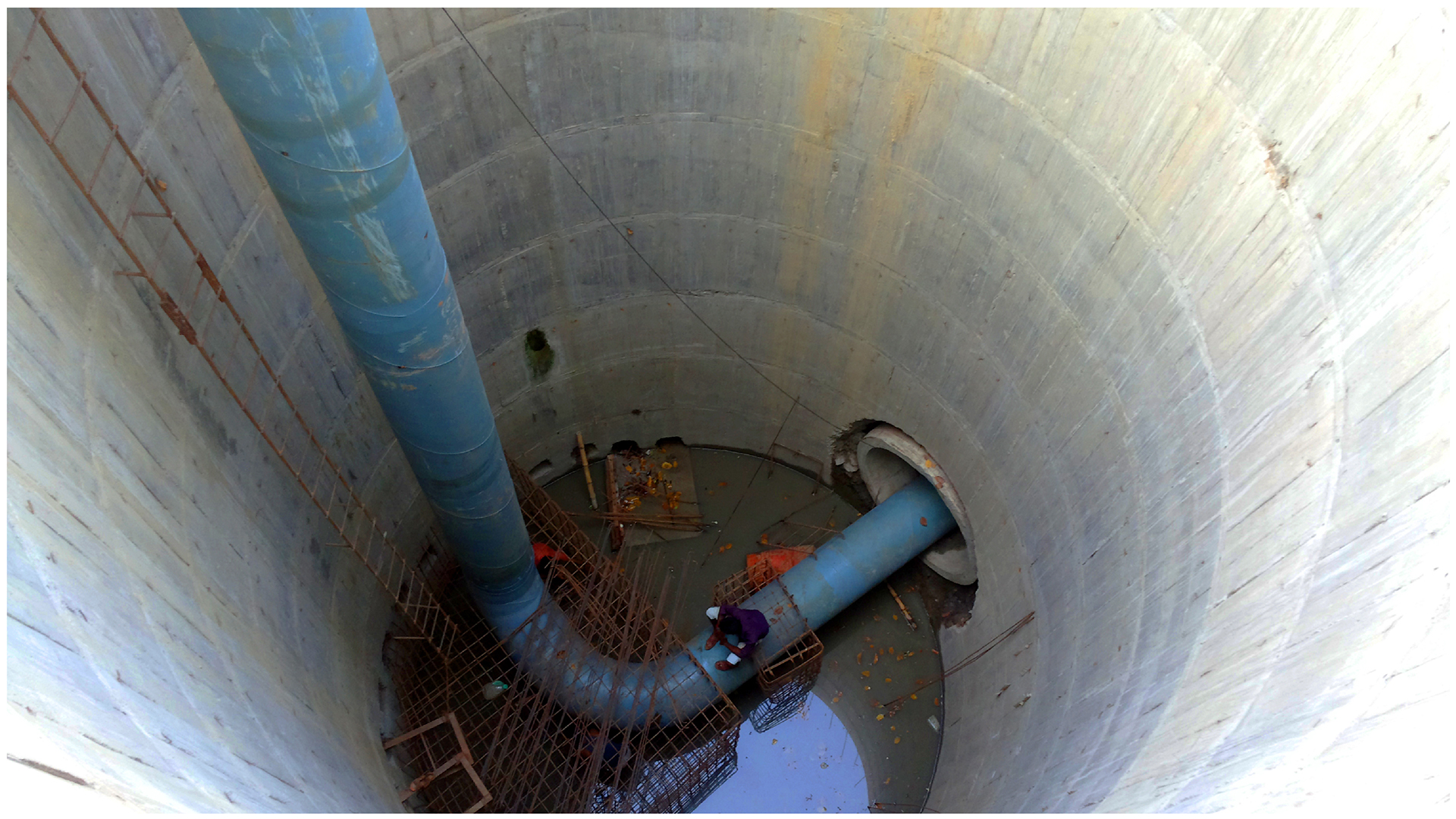Introduction :-
Pilot Tube Microtunneling (PTMT), also referred to as guided auger boring, guided boring method, and auger drilling, was introduced in the 1990s. Guided auger boring is defined as “Auger boring systems which are similar to micro-tunneling, but with the guidance mechanism actuator sited in the drive shaft (e.g. a hydraulic wrench which turns a steel casing with an symmetric face at the cutting head). The term may also be applied to those auger boring systems with rudimentary articulation of the casing near the head activated by rods from the drive pit (NASTT 2002).”
PTMT involves the installation of small diameter pipes of sewer lines or water lines. This technique also can be used for house connections direct from the main collector sewers. PTMT employs auger and accurate guidance system using a camera mounted theodolite and target with electric Light Emitting Diodes (LEDs) to secure the high accuracy in line and grade.
Description :-
PTMT can be applied for the installation of small diameter pipes which require high accuracy in line and grade. Hence, this method is appropriate for the installation of small diameter sewer pipelines and water lines. This technique is a combination of the existing trenchless technologies including auger boring, micro-tunneling, and horizontal directional drilling. PTMT employs augers for excavation and soil removal and the jacking system for pushing the pipes similar to auger boring. It uses a theodolite with camera as the guidance system. The target with LEDs is mounted in the steering head and is monitored through the TV monitor, which is similar to the guidance system of micro-tunneling. The operation process of PTMT includes pilot boring and reaming, which is typical operation for horizontal directional drilling.
In this method, a bore hole is drilled with a steering head connected to pilot tubes whose size is smaller than the required size. Then the bore hole is enlarged by a reamer and auger casing with augers inside. The product pipes follow the auger casing to be installed in the ground. Since the application of this technique is for smaller size pipes, the equipment and space required for this operation is smaller than those of other jacking methods such as auger boring, pipe jacking, and micro-tunneling. PTMT employs a steering head for boring and adjustment of alignment and grade. The steering head has a slant on one side.
The guidance system, consisting of target, theodolite, camera, and monitor, can detect the deviation of the drilling profile, and gives the operator continuous information about the location of the steering head. If deviations are detected though the monitor, the operator can modify the direction of the steering head by thrusting it using the slanted surface of the steering head.
The drilling process using PTMT can be described as follows:
- Excavate and prepare the driving and receiving shaft.
- Lower the thrust frame into the driving shaft and set it up (picture).
- A camera-mounted theodolite is set up as the guidance system in the driving shaft. The camera will be connected to the video monitor installed at the driving shaft and then used for monitoring the line and grade of the drilling profile.
- Set up the steering head and target. Different steering head can be deployed based on the soil conditions.
- Install the pilot tube behind the steering head. The boring process proceeds with the rotation and thrust of pilot tube. Deviations are continuously adjusted through the video monitor surveillance of the illuminated target via the theodolite.
- When the steering head reaches the receiving shaft, the reamer and casing with auger inside are connected to the last segment of pilot tube. Then the reamer and auger enlarges the pilot bore hole by rotating and thrusting the reamer and casing. The steering head and the pilot tubes can be retrieved at the receiving shaft. This process is repeated until all the pilot tubes are removed.
- After the reamer reaches the receiving shaft, an adapter is installed at the end of the last casing which connects the casing and product pipe. The product pipe is pushed by the jacking frame while the casings are retrieved at the receiving shaft. The augers remove the soil in the casings, and then retrieved at the driving shaft. This process is repeated until all casings and augers are removed.
Main features and Application range :-
PTMT can install pipes from 100 mm to 600 mm in diameter. The maximum drive length of PTMT is about 80-90 m. The PTMT can obtain the accuracy of 6 mm per 90 m pipe length. However, the accuracy depends on the capability of theodolite and the operator’s skill. The productivity of pilot tube installation can be as high as 40 m per 8-hour shift. PTMT can be applied in different soil conditions. However, hard soil with relatively larger boulders and rocks can cause some challenges to the performance, as can runny sands and unstable soils.

